Sir William Lawrence Bragg: The younger Nobel prize personality Who Beginnings of X-ray Crystallography in science
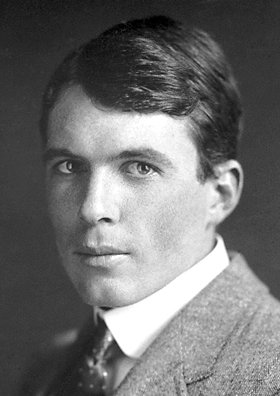
German scientist Wilhelm Röntgen
invented something amazing called 'X-ray', which responded to the whole
world. In 1895, there were many others who were busy to research
X-rays. The news reached a fast pace near William Henry Bragg,
an obscure physicist who lives in Adelaide, Australia, which was 15,000
kilometers away from Germany. And this was one of the reasons for his
being famous. He felt so much interest in Rontgen ray that he placing
X-ray equipment at his home. Then he started the research.
But, after a few days, his 6-year-old son Lawrence Bragg's
curiosity about X-ray was even more than him. This time, Henry banned
Lawrence Bragg's entry in the X-ray room. But whatever the case,
Lawrence wants to go there. He heard from his father's that X-ray was a
strange thing that could be possible to take pictures inside the human's
body. One day, Lawrence broke his elbow from his own wish by falling
from a tricycle to entered the x-ray room, as if his father was examined
him in the X-ray room! After 19 years of this incident, the intriguing
child Lawrence Bragg won the Nobel Prize by doing research on X-ray.
Henry Bragg, the physicist at The University of Adelaide,
discovered his son's unique tendency towards about science. He started
giving the initial education of Lawrence himself. He takes more emphasis
on mathematics, chemistry, and physics. At the age of 9, Lawrence was
admitted to Adelaide's "Queens School". The school was known for its
strict curriculum. Without strict perseverance, where the difficulty was
to pass in that school, there Lawrence achieved the highest result in
every test. His teachers, especially in physics, chemistry, and
mathematics teachers, were fascinated by his talent.
William Henry Bragg, image credit: commons.wikimedia.org Author: Nobel foundation, CC0 Public Domain
In 1901, Lawrence admitted to St. Peter's College.
This college was not physics. However, Lawrence continued to his study
in chemistry and mathematics satisfactorily. He was so much ahead of his
closest competitors in the tests that he was quickly upgraded to the
top class!
In 1906, Lawrence admitted into to Adelaide University.
He started to study in Mathematics, Chemistry, and Physics at Adelaide
University. At the age of 18, he completed a Bachelor’s degree in
Mathematics. Such a successful academic career was not a pleasure for
Lawrence. This period of his life later determined his personality.
Being a light year ahead of all in education and being promoted to the
upper class, no friend of his! Because at one time he was small in the
age in the class!
1909; When Lawrence was moving forward with
academic success, his father Henry did not stop her journey. This time,
he was a one of the most familiar faces in the physics world. Then his
father had been appointed Cavendish Chair Department of Physics at the University of Leeds. It was also respectful and coincidental for him. Shortly after this announcement, Lawrence received a scholarship at Cambridge University.
Then the entire family of Bragg came out in England. Lawrence admitted
to studying mathematics at Cambridge University. By his father's advice,
he chose physics by excluded mathematics.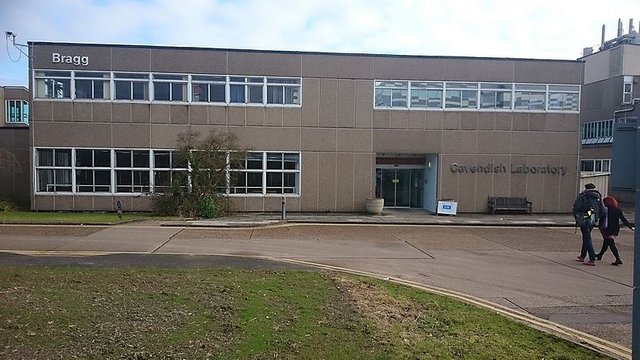
Bragg building, Cavendish Laboratory, image credit: commons.wikimedia.org Author: Silas S. Brown, CC0 Public Domain
Lawrence joined the Cavendish Laboratory
at the end of post-graduation. From there started his scientist
history. Until then, the science society believed that X-ray was a type
of particle whose distinction was not possible. But in 1912, German
scientist Max von Laue
discovered that X-ray is a type of wave, which is evolved by the
crystal. And at the end of the year, Lawrence made the first discovery
of his scientist's life which is known as 'Bragg's Law of X-ray Dislocation'. Before getting acquainted with it, we need to know about Diffraction and Interference.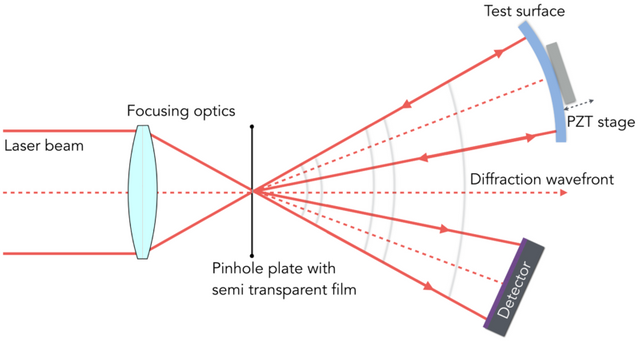
Diffraction interferometer, image credit: commons.wikimedia.org Author: Diwaker, CC0 Public Domain
The
spreading of waves around obstacles is called Diffraction. It's the
process by which a beam of light or other systems of waves is spread
out. When it passing through a narrow aperture or across an edge,
typically accompanied by interference between the waveforms produced it
may defined as Diffraction. And, as a result of the increase of two or
similar wavelength waves from any coherent source, the reduction of
their spread is called as an Interference. Interference is of two types.
In the places where the waves of symphysis occur, the expansion and
intensity of the receptive waves are greater. When the maxima of two
waves add together it called Constructive interference. If a crest of
one wave meets a trough of another wave, the amplitude wave is equal to
the sum of the individual amplitudes is known as destructive
interference. The light, sound, radio waves, even the water surface
waves are also inattentive. Divergence arises only when a wave
encounters any obstructed or empty space.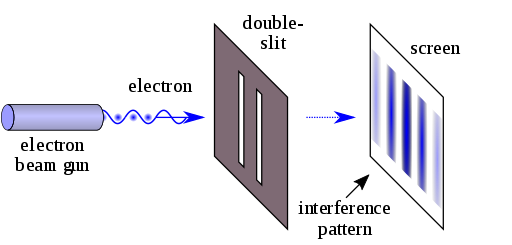
Explanation about X-ray Diffraction, image credit: commons.wikimedia.org, CC0 Public Domain
Lawrence
Bragg appeared very boldly in this scenario of evolution. He was only a
young man of 21 years, whose scientific experimentation had just begun.
On the basis of that, is it possible to find out the wrong of physicist
Max von Laue?
Lawrence proves it in his published paper, he
argued that the structure of the atoms between the X-rays and the
crystal lays incorrectly! He explained the pictures of the extinction of
the Laue, and showed that the fact that the tone is a distraction is
not a distinction, but an attitude!
Bragg's Law, image credit: commons.wikimedia.org Author: Aboalbiss, CC0 Public Domain
Here,
λ = Wavelength,
n = Is a positive integer,
d = The distance between the atoms in the crystal,
θ = The angle of the maximum quantity will be created.
Explaining
the pictures of Laue, Lawrence showed that there is a constructive ban
on the fact that the Laue has evolved into black dots. He also came to
the conclusion that this phenomenon occurs only when the wavelength is
the multiple of a positive integer. As a result, it is possible to
easily detect d by drawing a picture of the distortion of the x-ray wave
from the crystal. That is, the real distance between the atoms in the
realm of the people comes to the level! This was a breakthrough in the
history of science. Because, because of this discovery, it is possible
to know the complete structure of crystal images from different angles.
As a result, for the first time in history, the formation of an object
is on the atomic scale is possible to see and open the way to construct a
3D model of the atomic structure of the object. Laurence's proud and
fascinating father, Henry, started studying Leeds with his son's work
and determined the formation of the first three-dimensional crystal
structure.
In 1915, Lawrence Bragg won the Nobel Prize for
Physics for his formula. But he did not win the prize. Henry shared the
Nobel with the son to work on determining the formation of the object.
Lawrence has made a unique record of winning the Nobel Prize together
with Dad's son. He won the Nobel Prize at the age of 25 and won the
Nobel Prize for the record of being the youngest. In 2014, Malala Yousafzai broke the record winning the Nobel Peace Prize. However, Lawrence is still the youngest among the Nobel Laureates in science.
In
1914 When World War I started, Lawrence Bragg actively participated in
the war. Who is a researcher in the laboratory, he is an equally capable
hero on the battlefield. He won the 'Military Medal for Gallantry'
for his valor in the battlefield. Using a special method called 'Sound
Range', he was able to locate the artillery of the enemy in the
battlefield. At the end of 1915, his younger brother died in the war.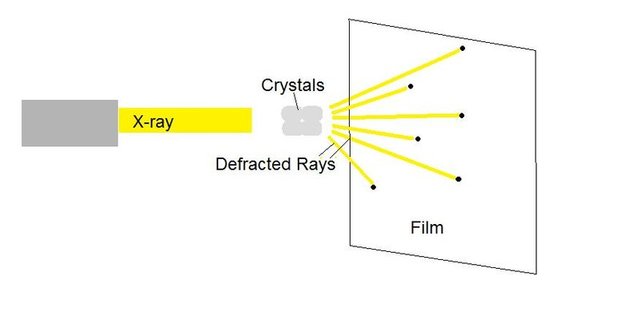
X-ray Crystallography, image credit: commons.wikimedia.org Author: JohnKim at English Wikibooks, CC0 Public Domain
After the first World War, Lawrence Bragg has carried out several minor research. When Ernest Rutherford
died in 1938, he received the Cavendish Chair of physics at Cambridge
University. In 1941, King George VI of Britain awarded him the
knighthood. During the war, he was researching Crystal. Because of the
war, his studies in the Cavendish Laboratory were interrupted enough. In
1946 when the war ended, he created X-ray crystallography, his last
major success. X-ray crystallography is a complex scientific method, by
which it is possible to accurately calculate the crystal's molecular and
atomic structure.
Image sources AND LICENCES:
All the images which I used in this post, they are free for commercial use and royalty free. Original images links also provided under them.
If You Want To Further Reading About This Article Don't Forget To Checkout These REFERENCES:
Sir Lawrence BraggBRITISH PHYSICIST
What is the difference between diffraction and interference of light?
Bragg's Law and Diffraction:How waves reveal the atomic structure of crystals
Thanks for reading this article. Don't forget to upvote and resteem this article. If you wish to read more article in my blog, then you can check out my other article from the below-mentioned list:
Behind of The Abel Prize: The highest award in mathematics history
Confirmation Bias: A tendency which influence your thought and decision in social life.
The Mystery Of New York City Draft Riots Of 1983
The Weird Haunted History Of Abandoned Place
Congratulations! This post has been upvoted from the communal account, @minnowsupport, by undead-writer from the Minnow Support Project. It's a witness project run by aggroed, ausbitbank, teamsteem, someguy123, neoxian, followbtcnews, and netuoso. The goal is to help Steemit grow by supporting Minnows. Please find us at the Peace, Abundance, and Liberty Network (PALnet) Discord Channel. It's a completely public and open space to all members of the Steemit community who voluntarily choose to be there.
If you would like to delegate to the Minnow Support Project you can do so by clicking on the following links: 50SP, 100SP, 250SP, 500SP, 1000SP, 5000SP.
Be sure to leave at least 50SP undelegated on your account.
Congratulations @undead-writer! You have completed the following achievement on the Steem blockchain and have been rewarded with new badge(s) :
You can view your badges on your Steem Board and compare to others on the Steem Ranking
If you no longer want to receive notifications, reply to this comment with the word
STOPTo support your work, I also upvoted your post!
Do not miss the last post from @steemitboard:
Vote for @Steemitboard as a witness to get one more award and increased upvotes!
@undead-writer
Thanks for sharing this great article. I am writing something about those men, but in spanish.